We’ve finished harvesting the cassava for this year, and have had a few nice meals of it so far.
Rachel’s favorite method for cooking cassava, and one which is very popular in our house, is to make cassava fries.
Since cassava requires boiling to make it safe for consumption, she peels the roots and cuts them into sections, then boils them in salty water until they are fork-tender.
The salt isn’t necessary to remove toxins, but it does make the final cassava fries taste much better.
Once the cassava is cooked, she then strains it and lets it sit for a while. Sometimes she puts it all in the fridge to finish later, other times she takes it right from the pot and moves on to the next step.
The boiled cassava is cut into fry-sized chunks and laid out on a baking tray that has been oiled with tallow or coconut oil.
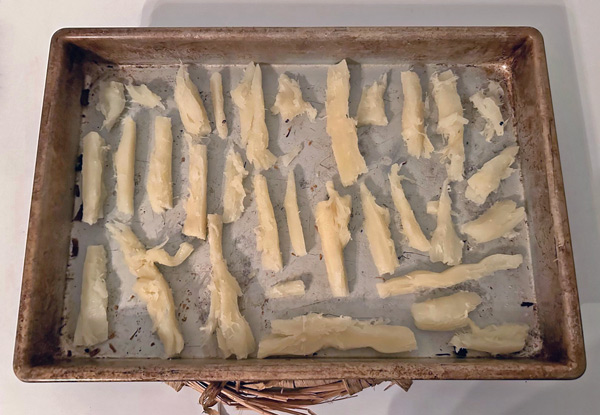
She then uses a brush to apply more tallow to all the pieces.
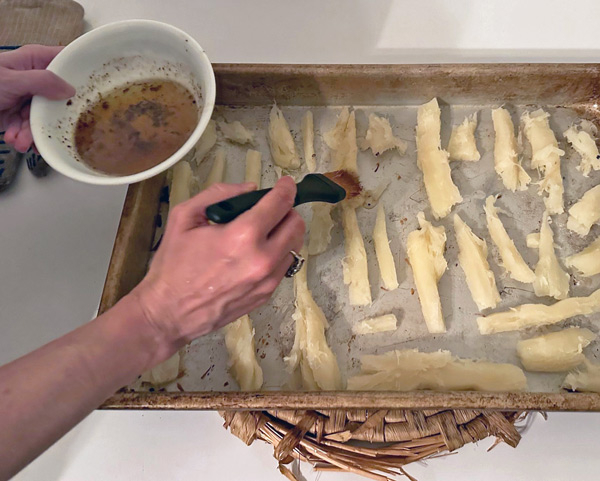
Beef tallow is really the best. Lard is good as well. Coconut oil is okay.
Once the pieces are oiled, she salts them, then puts them in the oven to broil on “High” for about fifteen minutes.
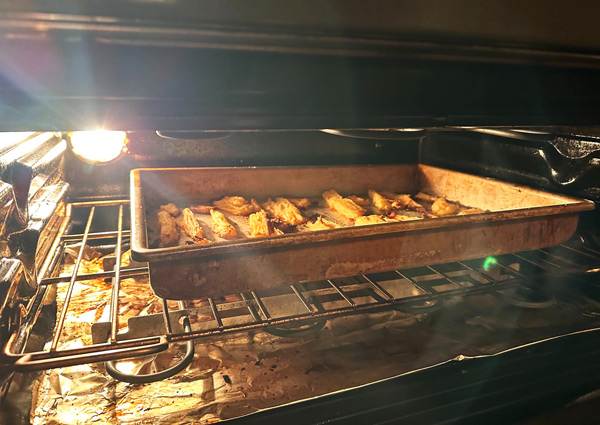
It usually takes more like 20-25 to be finished, because often the timer goes off at 15 and she checks them and gives them another 10 minutes. It partly depends on the size of the pieces you put in. Thinner pieces cook much faster than thicker ones. I like them to get a little crunchy, too. A little black on the edges is fine.
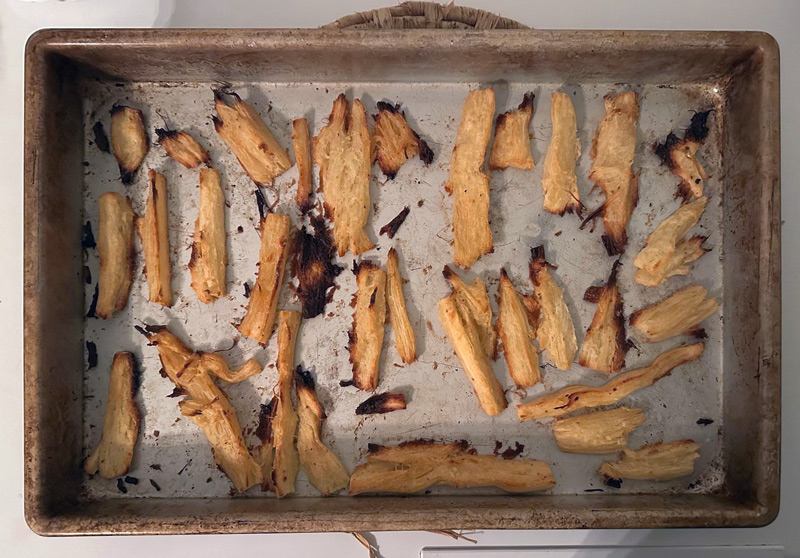
Then you just take them to the table, or transfer them to an appropriate piece of glassware from the 1970s.
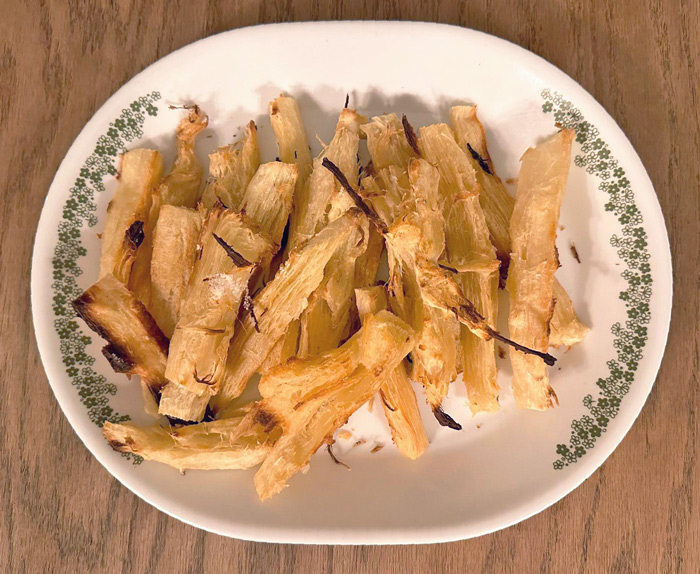
You can make homemade mayo or use ketchup to dip them in, but honestly: they are so good when boiled in salty water and then coated in tallow and roasted crispy, they don’t need anything to be perfect.
Cassava is one of the crops I highly recommend in Totally Crazy Easy Florida Gardening, as well as in my other Florida gardening books. It’s easier to grow than potatoes, is perennial, has a different season from white potatoes, can be kept in the ground for a long while, and thrives in the state of Florida.
Happy Feast of the Immaculate Conception… we’re headed to church today. And on the way, I will be hunting the international markets for some new root crops to test.

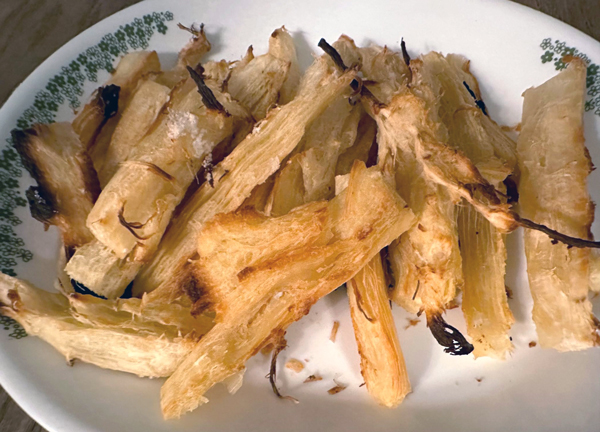
11 comments
Blog idea: could you have Rachel write a guest post or a series on what she makes with the produce out of the garden? How does she (and her helpers) manage the bountiful harvests without it going bad?
These cassava fries sound delicious by the way.
She would love to, and is a good writer.
However, the new baby, plus homeschooling and taking care of the house and fielding my calls has taken up her time. In another season of life, yes!
We hope you had a blessed feast day also. Ours was lovely and ended with the first real snowstorm of the season (NW MN).
How beautiful! It was a great service, and the church was beautifully decorated for Christmas.
I’m new to cassava so thanks so much for the recipe! I tried making some last year but it was very stringy and I don’t think I processed it correctly. I’d love for you to show how that part is done! Do you use a vegetable peeler? Do you remove the core? I haven’t been able to locate instructions for the actual processing part before you boil it.
This may help: https://www.youtube.com/watch?v=jyKPhaZw_0w
And the article version: https://www.thesurvivalgardener.com/need-know-growing-cassava/
I like to boil a bunch and eat them like that as a side dish and then use the refrigerated leftovers another day to make fries in a pan with garlic and olive oil.
Dominus vobiscum.
And top with lots of chopped cilantro or parsley!
That sounds great. Et cum spiritu tuo!
You are taking me back to my childhood in Puerto Rico . I love “yuca frita”! I remember we also put some garlic sauce on them (basically olive oil, minced garlic, little salt & pepper) and they were amazing!
Comments are closed.